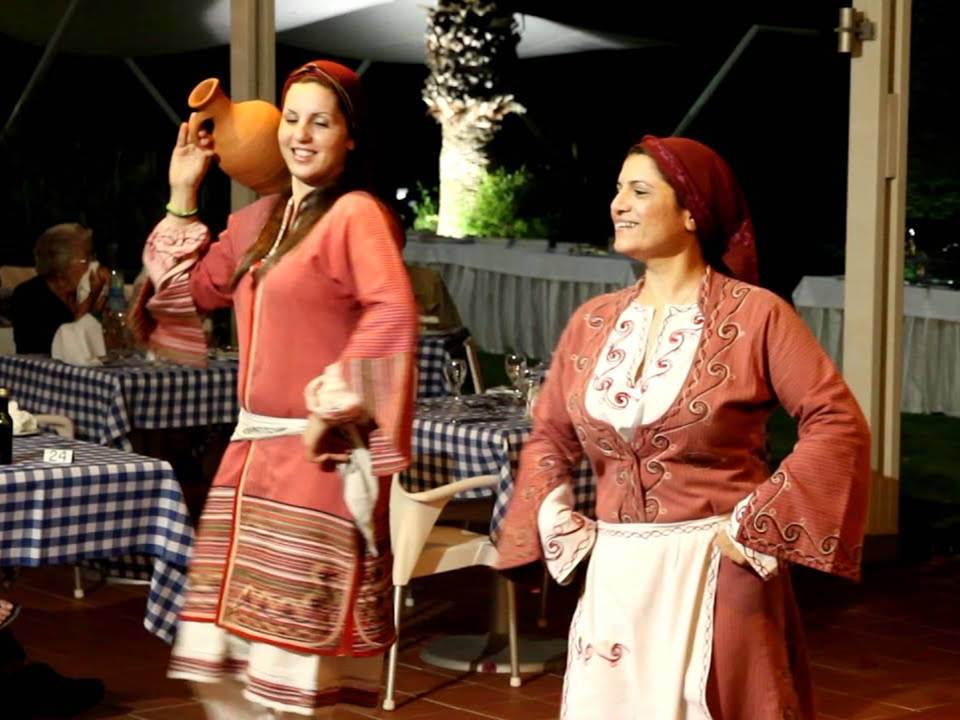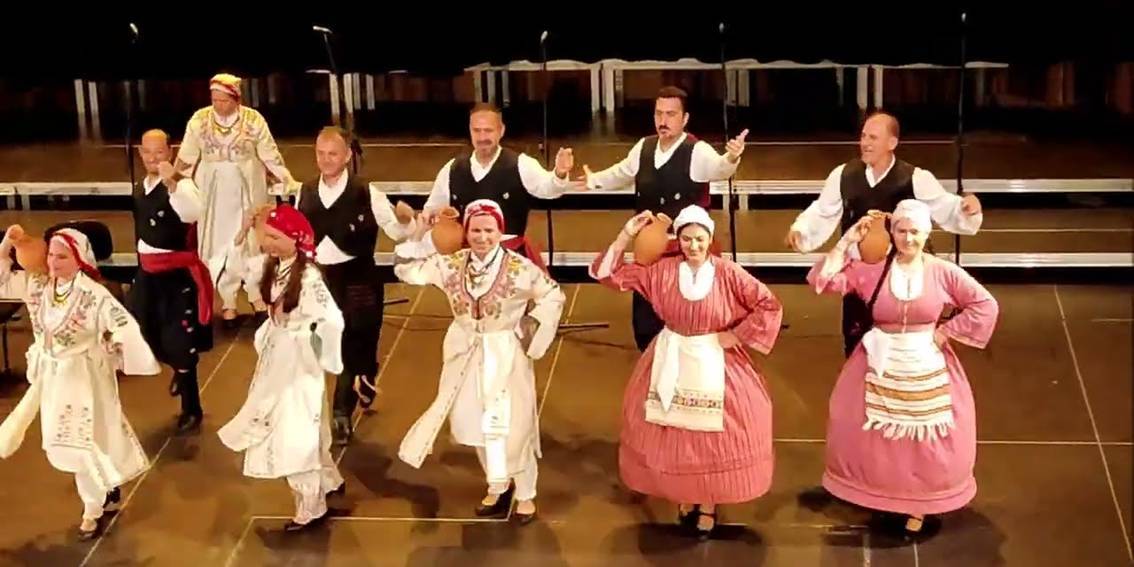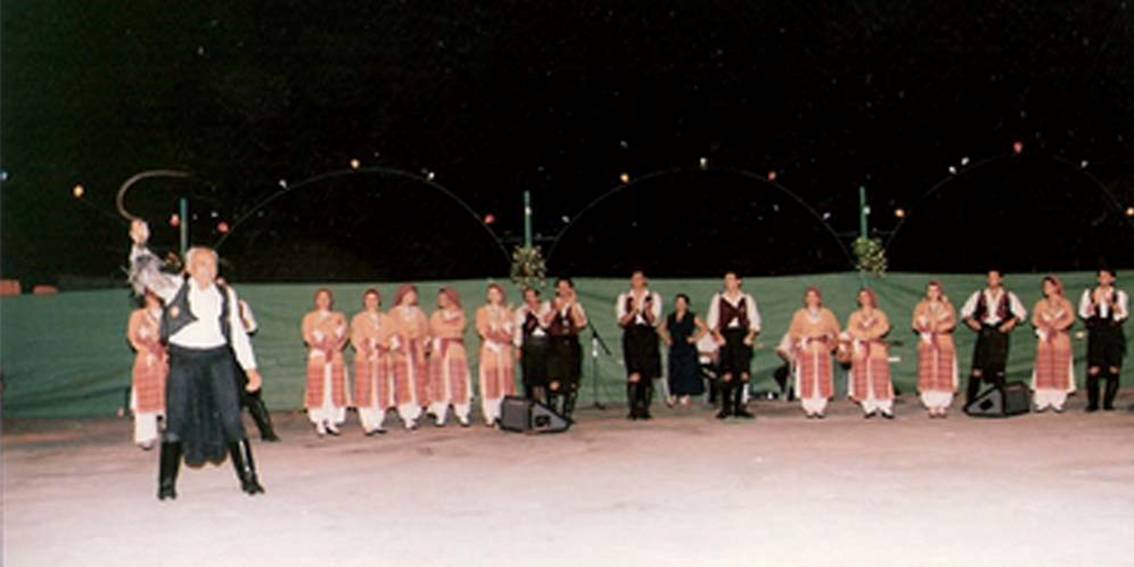The Cyprus Folk Dance “The kouza”: The Kouza Dance
The Kouza Dance is a traditional folk dance from Cyprus, a small island nation in the Eastern Mediterranean. Like many Cypriot traditions, it reflects the island’s rich cultural heritage, influenced by Greek, Turkish, and Middle Eastern cultures.
The Meaning of “Kouza”
The word “kouza” means “jug” in Greek. The dance features a clay jug, which dancers balance on their heads while performing. This highlights the dancer’s skill and balance and emphasizes the importance of everyday objects in Cypriot life.
Performed at Weddings and Festivals
People often perform the Kouza Dance at weddings, festivals, and other celebrations. Live music, played on traditional instruments like the violin, lute (laouto), and tambourine, accompanies the dance. The melodies are lively and rhythmic, energizing both dancers and the audience.
The Cyprus Folk Dance “The kouza” includes a series of steps, such as turns, hops, and coordinated movements. Dancers perform these steps in sync with the music, creating a dynamic and engaging performance.

Traditional Costumes
One of the most striking aspects of the kouza dance is the elaborate costumes worn by the dancers. Women typically wear long, flowing dresses adorned with colourful embroidery, while men don traditional Cypriot attire, which includes a vest, shirt, and baggy trousers known as “vraka.” These costumes not only add to the visual appeal of the dance but also serve as a connection to Cyprus’s rich cultural past.
A Symbol of Cypriot Identity
The kouza dance is a symbol of Cypriot identity and communal spirit. It brings people together, fostering a sense of unity and continuity with the past. Learning and performing this dance is often passed down through generations, ensuring that the tradition remains alive and vibrant.
Traditional Costumes
The costumes worn during the Kouza Dance are a key highlight. Women wear long, flowing dresses with colourful embroidery. Men dress in traditional Cypriot attire, including a vest, shirt, and baggy trousers called “vraka.” These costumes add visual appeal and connect the dance to Cyprus’s cultural past.
A Symbol of Cypriot Identity
The Cyprus Folk Dance “The kouza” symbolizes
Cypriot identity and communal spirit. It brings people together, fostering unity and a connection to the past. Families often pass down the dance through generations, ensuring the tradition stays alive and vibrant.
Modern Recognition
Today, the Kouza Dance has gained international recognition. It is often performed at global folk dance festivals and cultural events. The dance shows how traditional arts can thrive in modern settings, bridging the gap between the past and present.
Conclusion
The Cyprus Folk Dance “The kouza”, with its unique blend of music, movement, and cultural significance, remains a cherished part of Cypriot heritage. It continues to celebrate the island’s history and identity, captivating audiences both in Cyprus and around the world.




